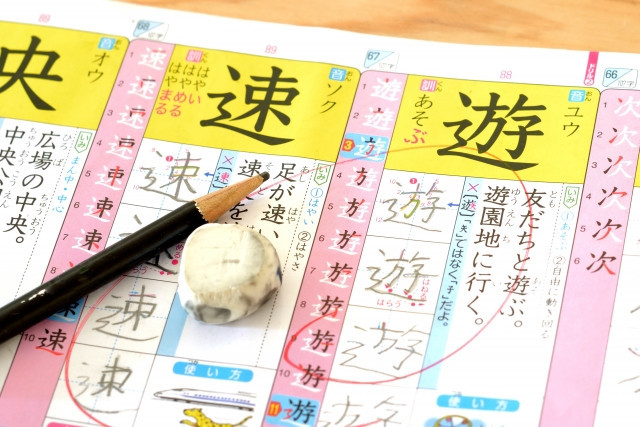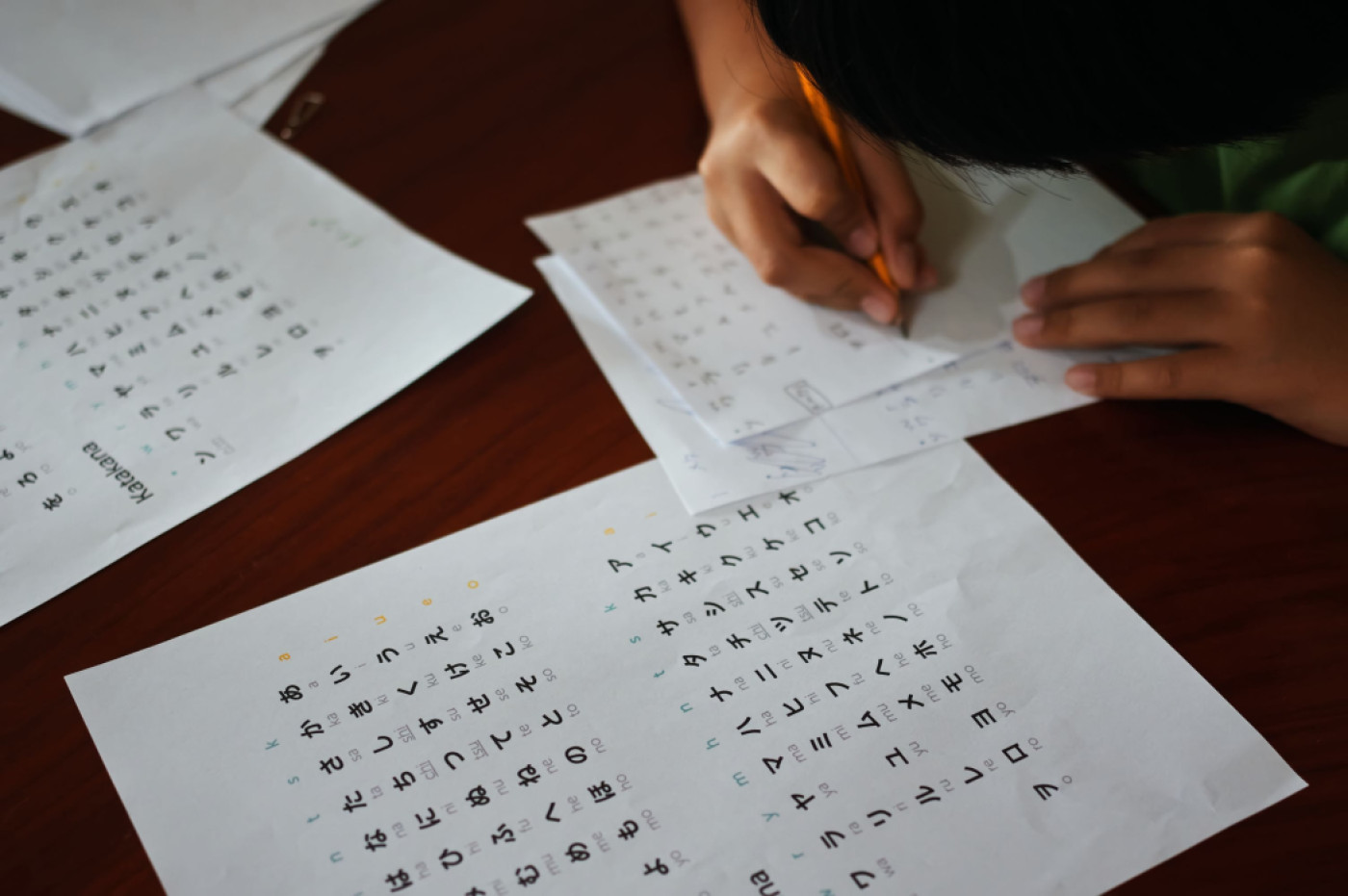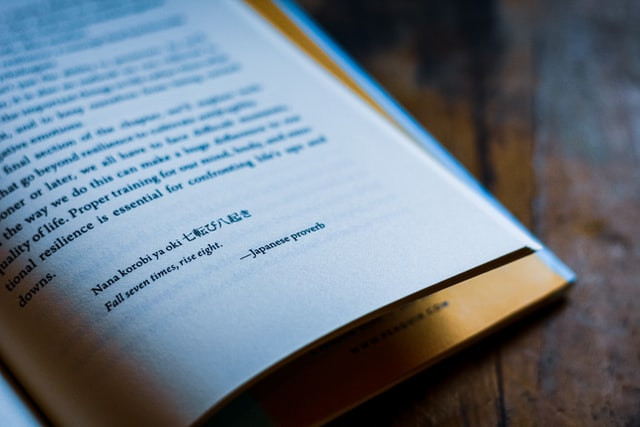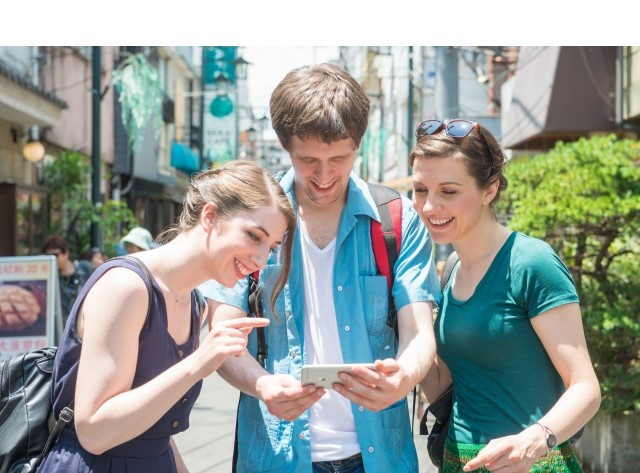Japanese is considered one of the most difficult languages for native English speakers to learn in the world. The Japanese language is made up of kanji, hiragana and katakana. Among these, kanji is the one that many Japanese learners find difficult.
So what is kanji? Why is it so difficult to learn and remember kanji? What is the best way to learn Kanji…? Learn the answer to these questions with WeXpats!
Table of Contents
- What do I need to know before learning Kanji?
- Basic Knowledge for Learning Kanji
- Best Way to Learn Kanji
- To Close
What do I need to know before learning Kanji?

Kanji, Hiragana, and Katakana
Kanji (漢字) is a type of ideogram, used in the modern Japanese writing system along with the two Japanese alphabets Hiragana (ひらがな) and Katakana (カタカナ). Kanji is an important part of writing Japanese.
Japanese Kanji characters along with the two Japanese alphabets Hiragana and Katakana are the 3 characters and alphabets that make up today’s Japanese language. While hiragana and katakana are syllabic characters (meaning each hiragana and each katakana will represent a syllable), kanji are logographic characters (meaning each kanji character has its own meaning and corresponds to a word). By combining kanji characters, it is possible to create many words with different meanings.
For example, the kanji 「電 (den) - electricity」 combined with the kanji 「車 (kuruma - car」will become「電車 (densha) - electric car, i.e. train」.
History and Origin of Kanji

Kanji are believed to have originated from China, although it is uncertain exactly when it was first invented. For your information, kanji translates to “Chinese character”. Kanji were originally drawings to illustrate things, or pictures to express an idea. Over time, these drawing symbols evolved into the characters written today. In many modern kanji, you can still see the silhouettes of the original “drawings” quite easily.
Chinese characters were first introduced to Japan in the 5th century AD via the Korean peninsula. Prior to this, Japan did not have any written script whatsoever. At that time, the Japanese started to record everything written and read in Chinese. Byt the 8th century AD, the Japanese began to annotate Chinese characters to mark pronunciations, and writings gradually changed to match Japanese grammar. And thus, the Japanese alphabets hiragana and katakana were born. However, it cannot be said that Kanji is purely Chinese because there are kanji characters that are original creations of the Japanese themselves!
How many Kanji are there in total?
Kanji consists of a huge number of characters. Honestly, the truth is that no one knows exactly how many kanji there are! Kanji are so old and have transformed so many times that there is no exact data on all the existing kanji. According to some sources, the number of kanji could be in the tens of thousands! However, don’t worry because there are many kanji that are rarely used or are only used in ancient writing, so you definitely won’t have to learn that many. It’s a fact that even Japanese people don’t know all the kanji, so don’t worry!
According to the Japanese Ministry of Education, Culture, Sports, Science and Technology (MEXT), there are a total of 2,136 kanji that are common in everyday life, known as「常用漢字 (jyouyou kanji)- - kanji for common use」. If you master all these kanji (and of course Japanese grammar), you’ll be considered fluent in Japanese. With that, you can confidently read news and books, speak and listen, study and work in Japanese as part of your daily life.
By Japanese Language Proficiency Test (JLPT) standards, the number of Kanji to learn for each JLPT level is:
- JLPT N5 - 100 kanji characters
- JLPT N4 - 300 kanji characters
- JLPT N3 - 650 kanji characters
- JLPT N2 - 1000 kanji characters
- JLPT N1 - 2000 kanji characters
※ MEXT, “常用漢字表”
Why must you learn Japanese Kanji characters?
In Japanese, each set of characters (kanji, hiragana, and katakana) plays a specific role and when combined, form the complete Japanese language. Therefore, when you are just starting to learn new words, you may be interested in hiragana only as it is easiest to learn, but once you have reached the level of writing complete sentences but only use hiragana, you may not understand what has been written.
Take a look at the example below:
(Both sentences mean exactly the same thing and are read exactly the same. The only difference is that one is written in kanji, and one is written in hiragana.)
- にわにはにわとりがいる
- 庭には鶏がいる
niwa ni wa tori ga iru
- there is a bird in the yard
Because there are no spaces in Japanese sentences, writing in kanji will help you distinguish the words in a sentence, making it easier to read. Besides, Japanese uses a lot of syllables, so writing in kanji can save space. A single kanji character can save writing 2~3, or more, syllable characters (hiragana / katakana).
In addition, there are many words that have the same sound but different meanings. For example, 「橋 - bridge」and「箸 - chopsticks」are both read “hashi”. Therefore, using kanji will help you differentiate the meaning of words that have the same reading in a passage.
Writer's Pick
Basic Knowledge for Learning Kanji

How to Read Kanji
Each kanji character usually has 2 readings.
-
音読み (on-yomi) - Chinese → Japanese reading (Chinese derived reading)
-
訓読み (kun-yomi) - original Japanese reading
So the question now is, how to know when to read in on-yomi and when to read in kun-yomi?
The general rule is that when a kanji is paired with another kanji to form a single word or vocabulary, then it is read in on-yomi. When the kanji stands alone or with hiragana, then it is read in kun-yomi. However, there are many special exceptions to this that you need to keep in mind!
You may also notice that kanji readings do not always match up with kun-yomi or on-yomi readings. For example, 「学校 (gakkou) - school」is a combination of 2 kanji characters 「学 (gaku)」and「校 kou」. However, it is not read “gakukou” but “gakkou”. This is done to make it easier to pronounce words.
How to Write Kanji

Most kanji look easy to copy but the complex kanjis can have 10, 20, or even 30 or more strokes! But if you look closely, the kanji are actually just made up of the same strokes repeated over and over! And that’s a tip for learning Japanese kanji characters!
When writing kanji, the most important thing to know is the right stroke order and direction from the get-go to avoid forming any bad habits. Beginner Japanese learners often think that stroke order doesn’t matter as long as the final product is complete. However, in addition to helping you memorise kanji correctly, proper stroke order also helps ensure that characters are recognisable even when you write quickly or use a variety of writing styles.
To write kanji correctly, you need to know the following rules:
- Up → Down
- Left → Right
- Horizontal Stroke first → Vertical Stroke after
- Left Oblique Stroke (comma dragging from right-to-left) → Right Oblique Stroke (comma dragging from left-to-right).
- Stroke to cut straight across last written stroke
- Enclosing Part (box) first → Inside after
- For enclosing parts (box), the left vertical stroke is written first
Even if you cannot remember all these rules when writing kanji, there are specialised Japanese dictionaries like mazii that provide the stroke order of writing kanji for you to follow.
Best Way to Learn Kanji

Make Use of Kanji Textbooks
Kanji textbooks are the most accessible and the first option that many Japanese learners will think of. Published books are guaranteed in terms of quality and credibility, so you can be rest assured when using them for Japanese studies.
Recommended Kanji Textbooks:
- Kanji Look and Learn
- Kanji Master (漢字マスター)
- Nihongo Sou Matome Kanji (日本語総まとめ漢字)
※ Each title has levels from beginner to advanced.
Memorise Kanji Characters Through 214 Sets of Radicals (214部首)

What are kanji radicals (部首 bushu)? As mentioned above, kanji characters are written with repeated strokes. These strokes are called “bushu (部首 - radicals)”, and there are 214 radicals in total.
So instead of memorising how to write each kanji character mechanically, focus on learning and memorising the kanji radicals. After that, writing kanji characters is just a matter of matching the radicals like a jigsaw puzzle.
You can find the 214 radicals here.
Learn Kanji with Apps

Persistence and discipline are important attributes when learning any foreign language. So what better way than to use your smartphone that you carry with you almost anywhere to learn Japanese kanji characters!
Anki
Perfect app for learning with flashcards method!
You can use Anki on your computer or download it for use on IOS or Android devices to study on the go.
Quizlet
This app lets you create your own personalised lessons with games to make lessons fun. It also has many cute images and compliments that appear when you answer correctly to keep you motivated.
You can use Quizlet directly from a web browser on your computer or download it to your smart device.
MochiMochi
This app’s strong point that makes it better than the above apps is that it classifies vocabulary into 5 levels. The app records which words you’ve learnt, which you haven't, which are easy, and which are difficult. There is also a reminder mode, so if you don’t use the app for a long time, it will “find you”.
You can use MochiMochi on IOS and Android.
To Close

Learning kanji does not have to be a chore and can be made fun. Once you’ve collected a decent amount of kanji characters, you can make kanji learning fun by reading manga and books in easy Japanese. If you find yourself getting overwhelmed, concentrate on memorising kanji that you frequently encounter first.
If you live in Japan, make it a habit to read or even just glance at any kanji you come across. These may be road signs, advertisement boards along your regular commute route, on trains, and in stores. Without realising as you go about your day and keep up with your kanji studies, you’ll find yourself having no trouble reading and understanding them! And trust us, that is a wonderful feeling.

































